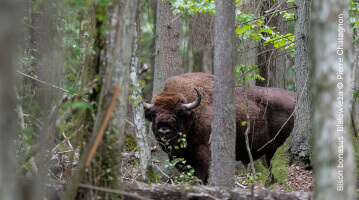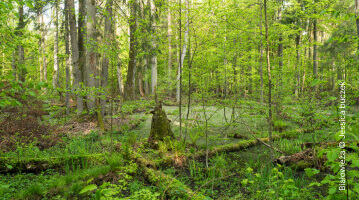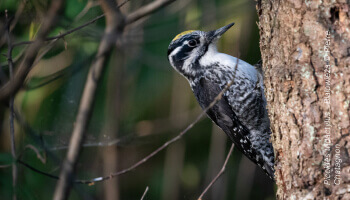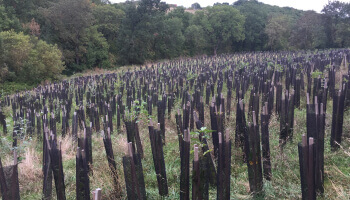What is a primary forest?
Exceptional biodiversity, carbon sinks, model ecosystems... primary forests are treasures the likes of which only nature could ever create.
Despite being threatened by deforestation, climate change and human activity, they remain essential to life on Earth and deserve every effort to preserve and regenerate them.
Understanding the Unique Role of Primary Forests in Biodiversity Conservation
A primary forest is a forest that hasn’t been damaged by human activity. They’re the forests we picture in our dreams – intact, self-regulating ecosystems, whose dynamics and functions haven’t been disturbed by our presence.
The FAO (Food and Agriculture Organization of the United Nations) provides a comprehensive definition in its Global Forest Resources Assessment 2020 report1 : a “naturally regenerating forest composed of native species in which there are no clearly visible indications of human activities and the ecological processes have not been significantly disturbed”.
The key part of that definition is the word “significantly”. Because until the appearance of the human species a little over 300,000 years ago, primary forests were the only ones that existed on the entire surface of the planet. Today, there are so few of them left that haven’t been affected in one way or another, and it’s practically impossible to ensure no human intervention has disturbed an ecosystem at one time or another in our “short” history on Earth.
The FAO also provides some key characteristics of primary forests:
- they show natural forest dynamics, such as natural tree species composition, occurrence of dead wood, natural age structure and natural regeneration processes;
- the area is large enough and retains a degree of connectivity to maintain its natural ecological processes;
- there has been no known significant human intervention or the last significant human intervention was long enough ago to have allowed the natural species composition and processes to have become re-established.
The ecologist Anton Potapov2 recommends we approach primary forests as “intact forest landscapes”, which he defines as “a seamless mosaic of forest and naturally treeless ecosystems within the zone of current forest extent, which exhibit no remotely detected signs of human activity or habitat fragmentation and is large enough to maintain all native biological diversity, including viable populations of wide-ranging species”. More specifically, they should cover an area of at least 500km2, characterised by the absence of any alteration or management attributable to agriculture, logging or mining, and the presence of a 1km buffer zone separating them from any infrastructure, such as roads or power lines.
The difficulty adopting a clear and universal definition reveals the extent to which we’ve impacted ecosystems, so much so that we’re now struggling to even identify the intact ones! However, primary forests are absolutely vital and our fate is closely related to their survival.
1 FAO. 2021. Global Forest Resources Assessment 2020: Main report. Rome.
2 Potapov, and al., (2017), Arthropods in the subsoil: Abundance and vertical distribution as related to soil organic matter, microbial biomass and plant roots. European Journal of Soil Biology, Volume 82, 2017, Pages 88-97
How many primary forests are left in the world?
The short answer is that there are 1.11 billion hectares left, according to the FAO as of 2020, which represents 27% of forest coverage worldwide3. If this seems like a big number, it’s worth remembering that UNEP (the United Nations Environment Programme) estimates that 80% of primary forests have been cut down in the last century.
But the devil’s in the detail. The FAO estimate is based on records from the 146 countries and territories that shared data with the organisation. However, even the authors of the report themselves admit that the reliability of this data is a source of concern, given each individual country adopts its own criteria. In France4 , for example, a primary forest is classed as a forest that hasn’t been touched by humans for at least 50 years (even though it’s estimated it takes 800 years for a temperate forest to regenerate and return to a “primary” state). In Canada5 , there’s no definition of what makes a primary forest. The country operates by extrapolating information from other factors, such as the absence of roads or housing near a forest. In other countries and territories, it’s the surface area of national parks and protected areas that’s converted to hectares of primary forest, even though these spaces can be subject to human intervention, as well as certain forms of exploitation. Several regional and global working groups have been set up within the scientific community in an attempt to come up with some common indicators that could help harmonise measurement criteria.
According to the FAO, 81 million hectares of primary forest have been lost worldwide since 1990, but the loss rate appears to have slowed by half over the past decade. Losses are greatest in Africa and South America, particularly in the Democratic Republic of Congo and Brazil, two regions where deforestation is reaching peak levels.
Today, primary forests can still be found on every continent, but the biggest are located in tropical and boreal zones. Over half (61%) of recorded primary forests are found in just three countries: Brazil, Canada and Russia. In Europe, the last true jewel in the crown is the Białowieża Forest, which straddles the Poland-Belarus border.
3 FAO. 2021. Global Forest Resources Assessment 2020. Global Data Dashboard
4 FRA 2020 report, France
5 FRA 2020 report, Canada
Why Are Primary Forests Essential for Biodiversity?
Primary forests are priceless in terms of biodiversity, carbon capture and storage, as well as ecosystem services. When protected from human disturbances, complex and unique relationships are formed here between living organisms. Some of these forest areas are home to species that simply aren’t found anywhere else on Earth. In the Amazon, for example, 25% of known species and 60% of tree and liana species are endemic to the primary forest6 . Their exceptional concentration of biodiversity lends them an extraordinary resilience. They self-regulate, allowing species to continue their life cycle in harmony, without the need for any external intervention. They actively participate in reconstituting water resources and the proper functioning of the water cycle, a role from which the impacts are felt well beyond forest boundaries, allowing entire communities to live. Perhaps more than any other type of forest, they contribute to regulating the climate by capturing enormous volumes of CO2 and oxygenating the atmosphere. Model ecosystems, they’re ultimately an unlimited and astonishing resource, as well as incomparable objects of study, as we try to understand all their diversity and the complexity of life on Earth.
6 Barlow et al., 2007

Primary forests in Europe
The last survivors of a greener past and teeming with biodiversity, Europe’s primary forests deserve our full attention – and protection!

Other primary forests around the world
Whether boreal, temperate or tropical, primary forests still cover a few magical parts of the planet. But their surface area is continuing to dangerously decrease...

Different types of forests
Primary, secondary, natural, ancient, virgin or primitive... we’ll help you understand all the different categories of forest.

Creating a primary forest
What’s the recipe for recreating intact forests with abundant biodiversity? Do absolutely nothing... or rather, leave nature to get on with it!
